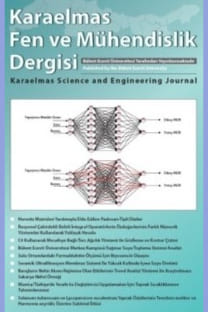Some alternative sweeteners xylitol, sorbitol, sucralose and stevia : Review
Some alternative sweeteners xylitol, sorbitol, sucralose and stevia : Review
Alternative sweeteners, artificial sweeteners, sugar alcohol sorbitol, xylitol, sucralose, stevia,
___
- Abu-Arab, EA., Abu–Arab, AA, Abu-Salem, MF. 2010. Physico-chemical assessment of natural sweeteners. Steviosides produced from Stevia rebaudiana Bertoni plant. J. African Food Sci., 4 (5): 269-281.
- Ahmed, MJ., Abdullah, KA., Kadhum, AAH. 2009. Optimization hydrogenation process of D-glucose to D-sorbitol. Over raney nickel catalyst. Eur. J. Scien. Res., 30 (2): 294-304.
- Al-Dabbas, MM., Al-Qudsi, JM. 2012. Effect of partial replacement sucrose with artifi cial sweetener sucralose on phsico-chemical, sensory of microbial characteristics and fi nal cost saving of orange nectar. Int. Food Res.J., 19 (2): 679- 683.
- American Dietetic Association 2004. Nutritive and nonnutritive sweeteners. J. Am. Diet. Assoc., 104:256.
- BIHW. 2009. Beverage Institute for Health and Wellness. The Lowdown on low calorie sweeteners. The straight fact on sweeteners, pp.1-18
- Brownlee, M. 2001. Biochemistry and Molecular Cell Biology of Diabetic Complications. Nature, 414 (6865): 813–820.
- Cardana, C., Simonetti, P., Canzi, E., Zanchi, R., Pietta, P. 2003. Metabolism of stevioside and Rebaudioside A. from Stevia Rebaudiana extracts by human microfl ora. J. Agric. Food Chem., 51: 6618-6622.
- Cherniske, S. 2012. The sweet truth Pros and cons of natural and artifi cial sweeteners. E-book. USA.
- Doheny, K. 2008. Sweetener Side Effects. Case Medical News.
- Horn, EEV. 2009. Artifi cial sweetener, their origins and mechanisms special topics. Scholarly paper submission Dr. Bruce Jarvis .LFSC 608, University of Maryland, USA.
- Hough, L., Khan, R. 1989. Enhancement of the sweetness of sucrose by conversion into chlorodeoxy derivatives. In progress sweeteners. Elsevier, London. pp. 97-120.
- Hutapea, AM.,Toskulkao, C., Wilairat P., Buddhasukh, D.1999. High performance liquid chromatographic separation and quantitation of stevioside and its metabolites. J. Liq. Chromatogr. Relat. Tech., 22: 1161-1170.
- Ishii, IE., Brache, A. 1995. Stevioside is not metabolized in the isolated perfused rat liver. Res. Commun. Mol. Pathol. Pharmacol., 87(2): 167-175.
- Lebedev, I., Park, J., Yaylaian, R. 2010. Popular sweeteners and their health effects, Interactive Qualifying Project Report Submitted to Faculty of the Worcester Polytechnic Institute in partial fulfi llment of the requirements for the Degree of Bachelor of Science.
- Joint FAO/WHO Expert Committee of Food Additives. 1996- 2001. Sorbitol Regulation. Geneva, Switzerland.
- Knight, I. 1994. The development and application of sucralose, a new high intensity sweetener. J. Physiol. Pharmacol., 72 (4): pp. 435-439.
- Kroger, M., Meister, K., Kava, R. 2006. Low-calorie sweeteners and other sugar substitutes: A Review of the Safety Issues. Comprehensive Rev. Food Sci. Food Safet., 5: 35-47.
- Kusserow, B., Schimpf, S., Claus, P. 2002. Hydrogenation of glucose to sorbitol over nickel and ruthenium Catalysts. Adv. Synth. Catal., 345: 289-299.
- ISSN: 2146-4987
- Yayın Aralığı: 3
- Başlangıç: 2011
- Yayıncı: ZONGULDAK BÜLENT ECEVİT ÜNİVERSİTESİ
Johrenia Dichotoma DC. Apiaceae Üzerinde Görüntü Analiz Sistemi İle Karyolojik Bir Çalışma
Esra MARTIN, Yavuz BAGCI, Muhittin DİNC, Fahim ALTİNORDU, Ahmet DURAN
Some alternative sweeteners xylitol, sorbitol, sucralose and stevia : Review
Basmaa S SHEET, Nevzat ARTIK, Mahmoud A AYED, Omar Fawzi ABDULAZİZ
Akyaka Beldesi Gökova Körfezi, Muğla Sahil Sedimanlarının Bazı Jeolojik Özellikleri
Hülya Keskin ÇITIROĞLU, Ayten CESUR, Gürkan BACAK, İbrahim ONUR
